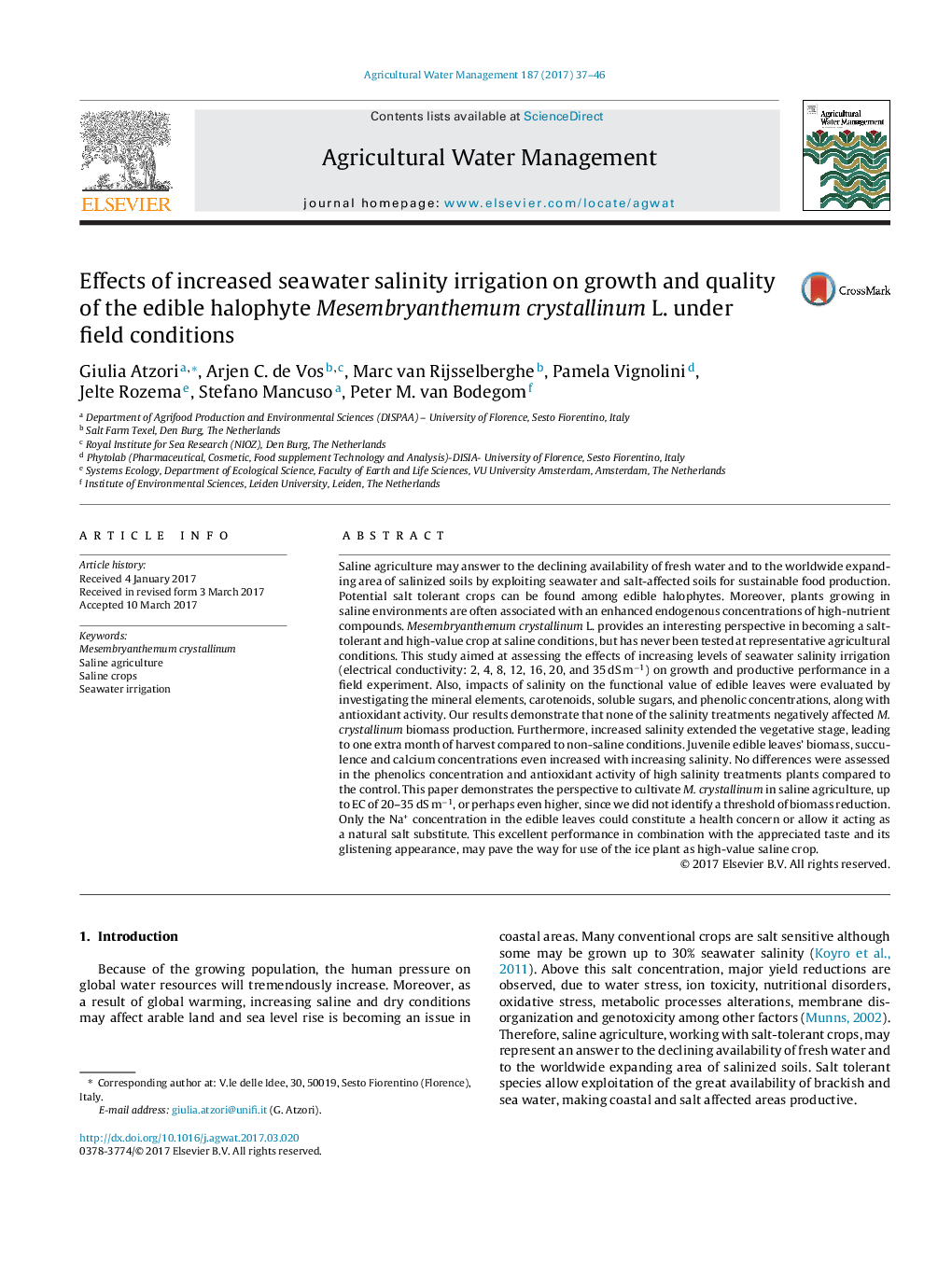| کد مقاله | کد نشریه | سال انتشار | مقاله انگلیسی | نسخه تمام متن |
|---|---|---|---|---|
| 5758490 | 1622893 | 2017 | 10 صفحه PDF | دانلود رایگان |
عنوان انگلیسی مقاله ISI
Effects of increased seawater salinity irrigation on growth and quality of the edible halophyte Mesembryanthemum crystallinum L. under field conditions
دانلود مقاله + سفارش ترجمه
دانلود مقاله ISI انگلیسی
رایگان برای ایرانیان
کلمات کلیدی
موضوعات مرتبط
علوم زیستی و بیوفناوری
علوم کشاورزی و بیولوژیک
علوم زراعت و اصلاح نباتات
پیش نمایش صفحه اول مقاله

چکیده انگلیسی
Saline agriculture may answer to the declining availability of fresh water and to the worldwide expanding area of salinized soils by exploiting seawater and salt-affected soils for sustainable food production. Potential salt tolerant crops can be found among edible halophytes. Moreover, plants growing in saline environments are often associated with an enhanced endogenous concentrations of high-nutrient compounds. Mesembryanthemum crystallinum L. provides an interesting perspective in becoming a salt-tolerant and high-value crop at saline conditions, but has never been tested at representative agricultural conditions. This study aimed at assessing the effects of increasing levels of seawater salinity irrigation (electrical conductivity: 2, 4, 8, 12, 16, 20, and 35Â dSÂ mâ1) on growth and productive performance in a field experiment. Also, impacts of salinity on the functional value of edible leaves were evaluated by investigating the mineral elements, carotenoids, soluble sugars, and phenolic concentrations, along with antioxidant activity. Our results demonstrate that none of the salinity treatments negatively affected M. crystallinum biomass production. Furthermore, increased salinity extended the vegetative stage, leading to one extra month of harvest compared to non-saline conditions. Juvenile edible leaves' biomass, succulence and calcium concentrations even increased with increasing salinity. No differences were assessed in the phenolics concentration and antioxidant activity of high salinity treatments plants compared to the control. This paper demonstrates the perspective to cultivate M. crystallinum in saline agriculture, up to EC of 20-35Â dSÂ mâ1, or perhaps even higher, since we did not identify a threshold of biomass reduction. Only the Na+ concentration in the edible leaves could constitute a health concern or allow it acting as a natural salt substitute. This excellent performance in combination with the appreciated taste and its glistening appearance, may pave the way for use of the ice plant as high-value saline crop.
ناشر
Database: Elsevier - ScienceDirect (ساینس دایرکت)
Journal: Agricultural Water Management - Volume 187, June 2017, Pages 37-46
Journal: Agricultural Water Management - Volume 187, June 2017, Pages 37-46
نویسندگان
Giulia Atzori, Arjen C. de Vos, Marc van Rijsselberghe, Pamela Vignolini, Jelte Rozema, Stefano Mancuso, Peter M. van Bodegom,